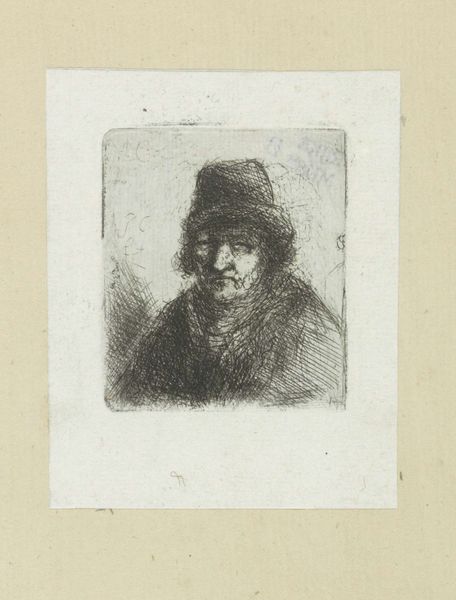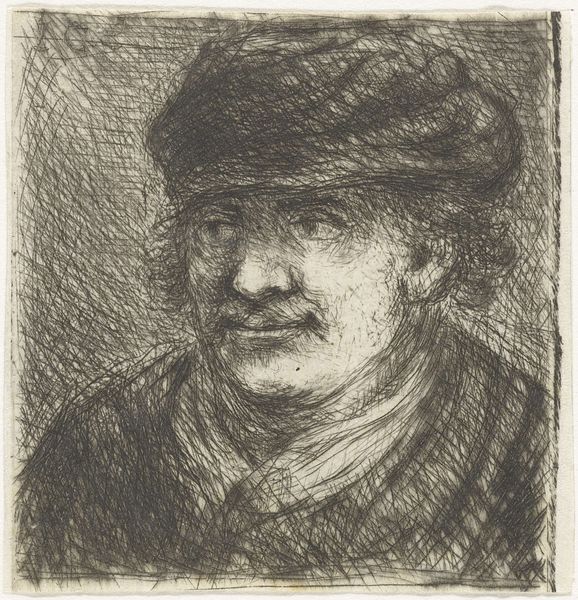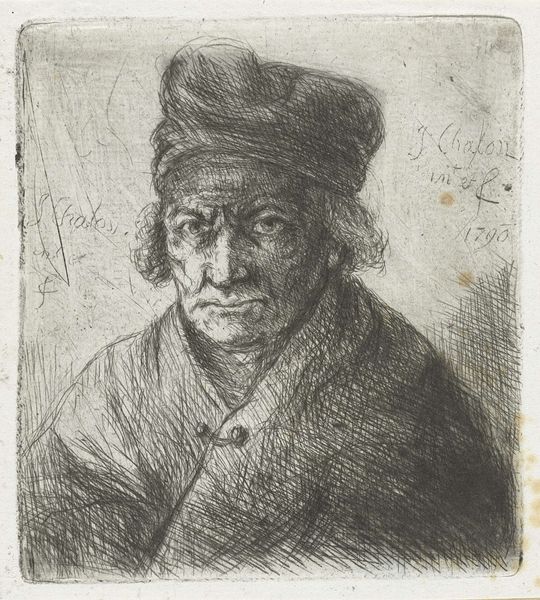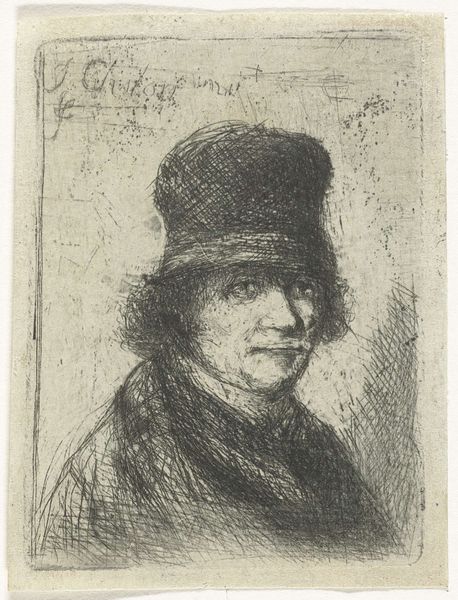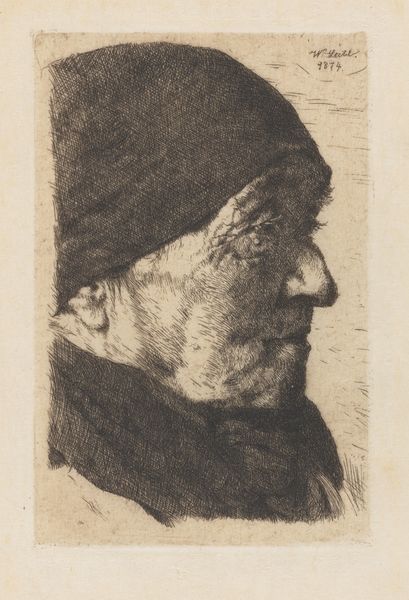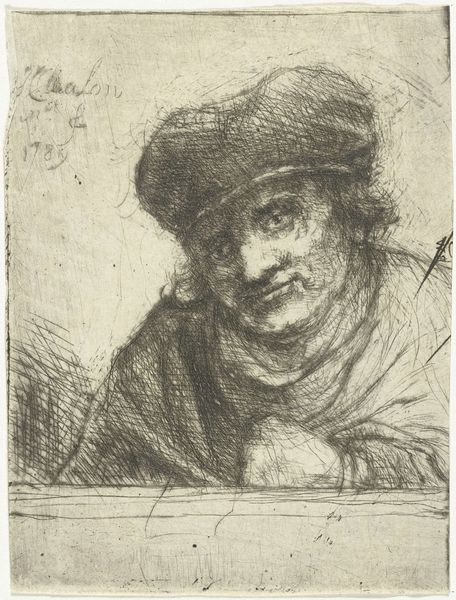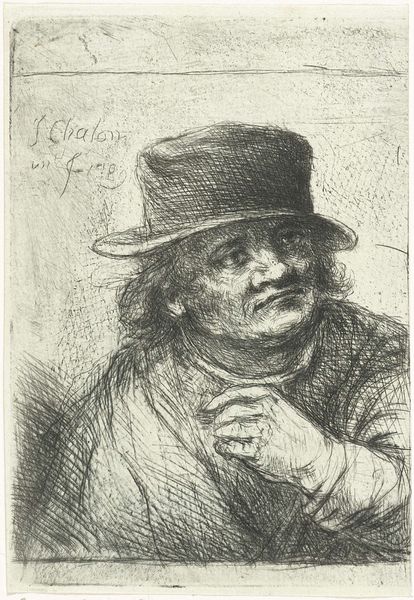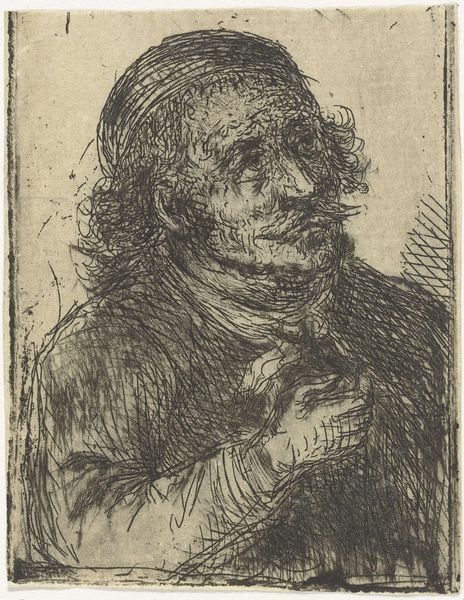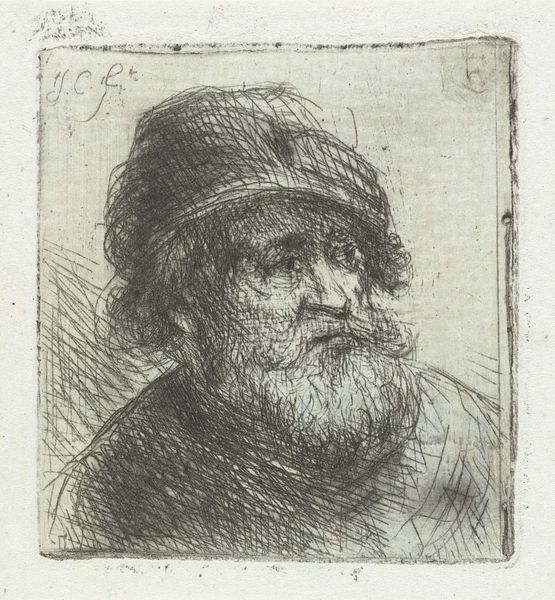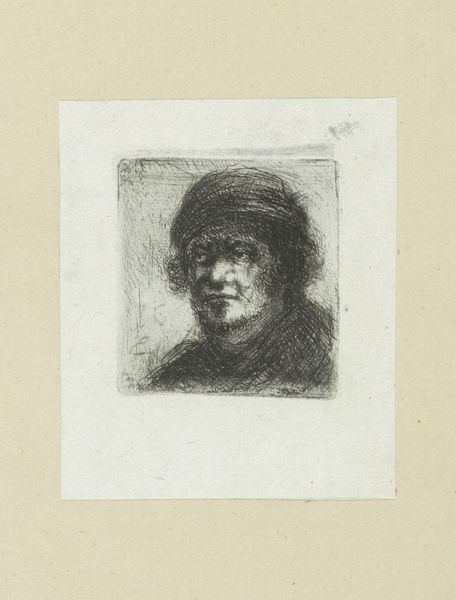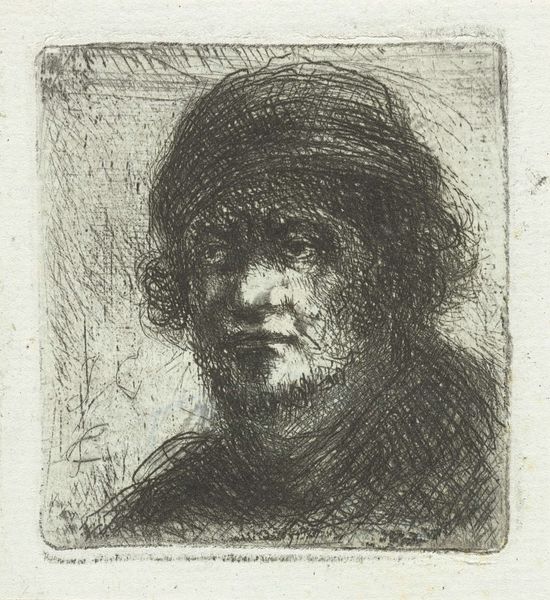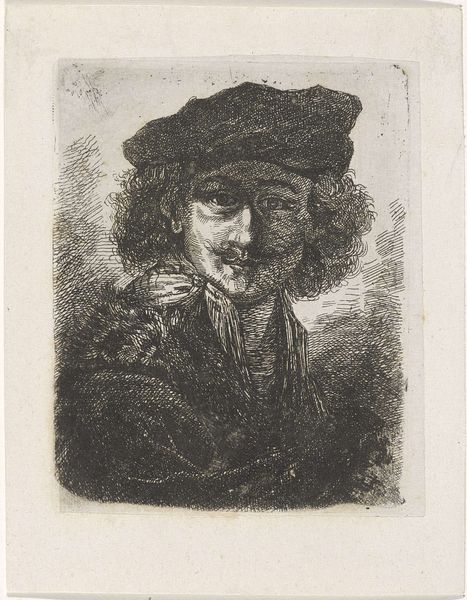
Dimensions: height 64 mm, width 55 mm
Copyright: Rijks Museum: Open Domain
Jan Chalon made this small etching, "Volwassen man met hoed," sometime in the late 18th century. Etching, of course, is a printmaking process. A metal plate, likely copper in this case, is coated with a waxy, acid-resistant substance. The artist then draws through this coating with a sharp needle, exposing the metal. When the plate is submerged in acid, the drawn lines are etched into the surface. Ink is then applied to the plate, filling these etched lines. Finally, the plate is pressed onto paper, transferring the ink and creating the print. The quality of the line, and the depth of tone achievable through etching, allowed for a great deal of nuance. But its greatest impact was on the democratization of images. Prints like this one allowed the circulation of imagery on a scale previously unimaginable. This simple portrait shows us how the world was being remade through relatively accessible means of production.
Comments
No comments
Be the first to comment and join the conversation on the ultimate creative platform.
